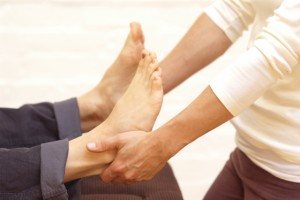 Craniosacral Therapy (CST) – gentle and non-invasive, addresses bones of the head, spinal column and sacrum to release held tension in those areas. This alleviates stress and pain and seeks to restore the natural position of the bones and soft tissue. CST can decrease stress from chronic injuries as well as provide relief from migraines, neck and back pain, temporomandibular joint disorder (TMJ), and many more. Organ positioning and function are important in total body balance. For example, many back and neck problems result from organ dysfunction and imbalance within the body. CST addresses the ways in which our organs support our musculoskeletal system and helps to re-establish the body’s ability to adapt and restore itself to health.
Craniosacral Therapy (CST) – gentle and non-invasive, addresses bones of the head, spinal column and sacrum to release held tension in those areas. This alleviates stress and pain and seeks to restore the natural position of the bones and soft tissue. CST can decrease stress from chronic injuries as well as provide relief from migraines, neck and back pain, temporomandibular joint disorder (TMJ), and many more. Organ positioning and function are important in total body balance. For example, many back and neck problems result from organ dysfunction and imbalance within the body. CST addresses the ways in which our organs support our musculoskeletal system and helps to re-establish the body’s ability to adapt and restore itself to health.
Zero Balancing (ZB) – a light touch therapy, deeply relaxing and energizing, used to promote wellness and balance. ZB addresses the relationship between energy and structure. Touching into the skeletal system, light traction is applied on areas of tension in bones, joints and soft tissue. Then waiting for the tension to release in its own time, helping the body to relax and re-orient. It also helps to clear certain blocks in the body’s energy flow, which can contribute to better postural alignment, and ease chronic physical and emotional pain. ZB is focused on the skeletal system, working in collaboration with Craniosacral Therapy helping the body to self-regulate and restore balance to the body.
What to Expect during your Treatment
The first visit will usually take about 1 ½ hours, allowing time to get to know you and where you might be experiencing discomfort. We begin with your current symptoms and discuss how they are impacting your life. We also discuss your history and any accidents, trauma, illnesses, including any emotional stresses that have occurred.
In the session you will lie in a supine position, fully clothed. It is recommended that you wear something loose-fitting and comfortable. I begin by placing my hands on areas of the body, not necessarily associated with the symptomatic area of pain, i.e., feet, head, sacrum. Cranial treatment is applied to the body as a whole, recognizing that pain or a problem in one area can sometimes relate to an issue in another part of the body.
I may use other modalities when appropriate, always with respect to your comfort at all times.

